Description
A Tropical Beauty with Abundant and Fragrant Blooms.
The Nerium oleander is a very popular shrub native to Iberia and Persia, and surrounding areas. Traces of these plants exist in different areas of northwest Africa. You can find the Nerium oleander in historical literature, such as in the Frescoes of Pompeii and other writings. Often used as an ornamental shrub, its blanket of blooms is offset by dark green leaves. When planted in a row, the oleander makes a flowering privacy screen that attracts hummingbirds and butterflies.
Incredibly hardy, the Calypso resists drought and extreme heat and keeps blooming summer through fall. It can even survive cold down to 20 degrees. Oleanders grow best in full sun, and can grow to 8 to 15 feet tall, and nearly as wide. Make sure to give these plants plenty of space to grow into.
Do you love soaking up the sun? So does Nerium Oleander! This shrub is one of the most beautiful shrubs, with clusters of flowers that are a great way to improve the aesthetic appeal of your home.
Caring for your Nerium Oleander
If you are looking to grow an Oleander shrub, then you must opt for one that has a strong central stem. Such plants will grow rather quickly. It would help if you also took good care of the plants to ensure that they grow to the best of their potential.
Light
When growing the Calypso, you must ensure that it gets enough light. Having complete light from the sun is the preferable light condition, but if you cannot provide that, this plant can also thrive in partial shade. However, the lack of sun may affect its foliage. The plant is otherwise low maintenance and can tolerate the worst conditions such as drought, heat, and the wind.
Soil
The soil should be well-drained if you want the best outcomes. However, these shrubs can even adapt to soil conditions that are not favorable. For example, you can even use sandy soil for the Oleander.
The plant can accept different pH levels between 5.0 and 8.3.
Water
Before watering your plant, you need to check if the top inch of the soil is dry. If the soil is moist, wait for it to dry before you can water it. When you overwater your plants, they may suffer different diseases; it can also cause your plant to become root-bound.
Fertilizer
You may need a balanced fertilizer to ensure that the plant gets enough nutrition to grow. The best time to add fertilizers is in spring, and then you can add a little fertilizer each year. You do not need to add a lot of fertilizer as that is not good for your plants.
Common Issues
There are not many common issues that come with Oleander. But you still need to be careful to avoid any problems that may arise.
Pests
It is interesting that the Calypso plant creates latex and other extracts on its own. This helps the plant ward off insects as they are a potent insecticide, which also makes the plant resist diseases and pests.
However, aphids, mealybugs, and scales can still affect the plant and its growth. Caterpillars are especially bad for your plants. They can leave their cocoons on the leaves or the stems, where they can eat through the foliage. Remove the cocoons to prevent any damage.
Disease
The plant is highly resistant to Verticillium Wilt, so you do not have to worry about that. On the other hand, if you overwater the plants, they may get yellow leaves or white marks.
If the leaves start to lose color and turn pale, then they might be suffering from an iron deficiency. You do not need to change the fertilizer or add more to it. Instead, you need to see if the soil is of the right pH level.
Pruning
It is not important to prune Oleander, but if you prune it at the right time, you can increase flowering and foliage. When pruning, make sure that you do not prune the plant completely. This is because flowers only grow on older stems.
Make sure to prune your plants in early spring so that the plant can grow much faster.
Propagation
Once can propagate the Oleander by cutting it, which is one of the easiest ways to propagate. You can make the cuttings in August as they are the most successful.
Potting/Repotting
Once your plant is a year old, you can repot it to a bigger container. You need to ensure that the plant’s roots spread out evenly; if you don’t, the roots may clump, which can harm your plant.
Be aware the Oleander is considered to be incredibly poisonous. Factor this into your plans if your yard is frequented by small children.

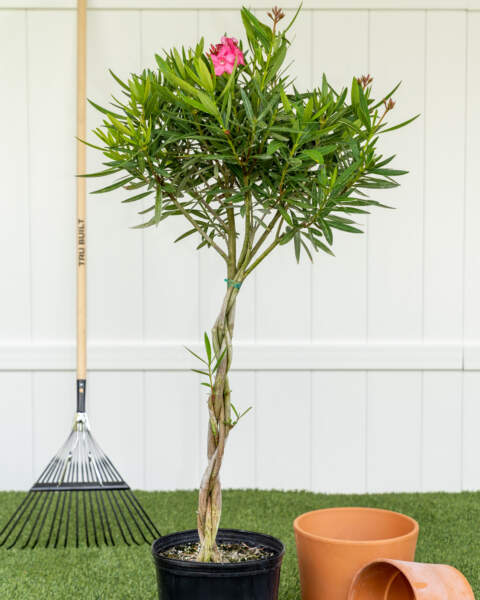
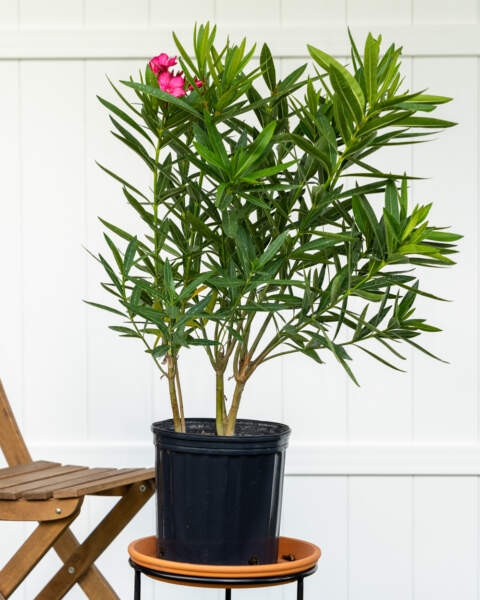
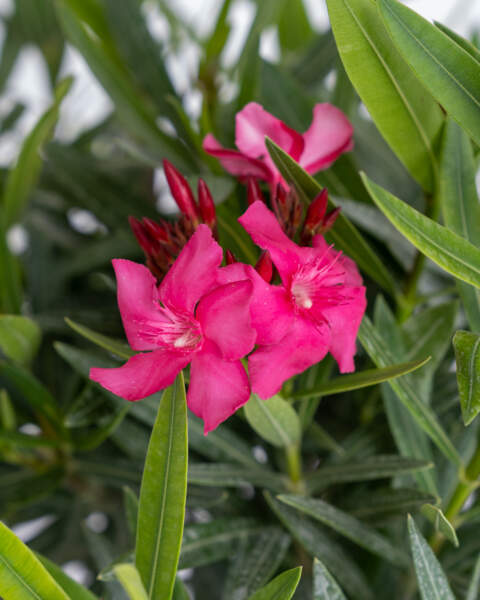
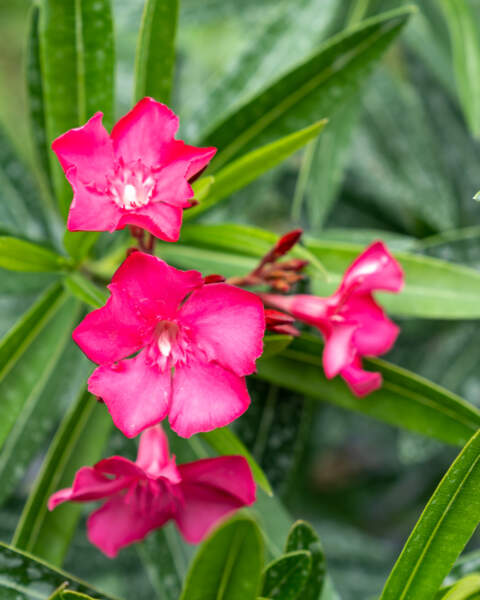
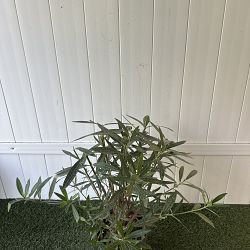
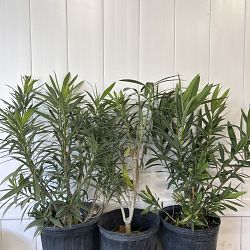
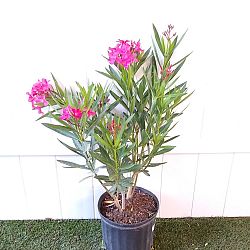
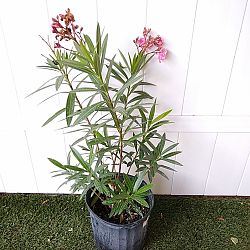


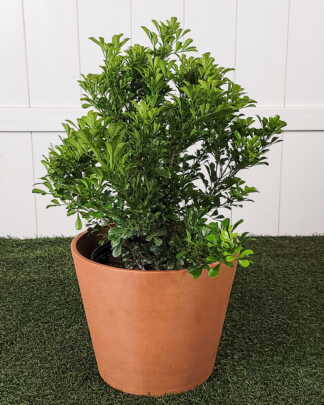

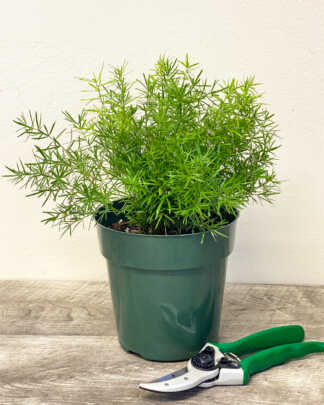
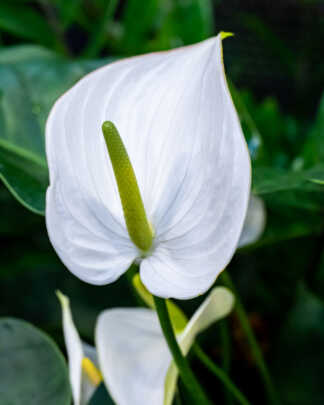
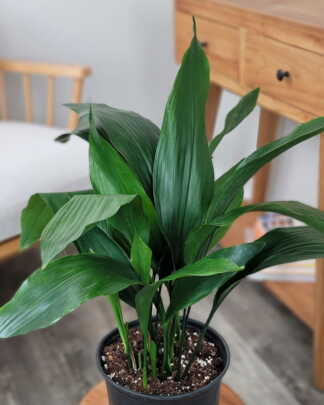


Matt G. (verified owner) –
This is a beautiful plant, and very healthy.
V. Rev Canon Héctor Perez (verified owner) –
Anonymous (verified owner) –
My plant is the Oleander bush rather than the tree pictured here. The plant arrived in great condition, looking very healthy. I like the instructions you sent about the immediate plant care after unpacking it. Hoping to plant my bush into a large container in another week , weather permitting. The customer service has been great.
Anonymous (verified owner) –
The roots were on top exposed
Marinne R. (verified owner) –
I was quite skeptical about purchasing plants on-line, so this was my first experience. I have been delighted with the whole experience. My plants arrived in beautiful condition, despite the fact that they were shipped from Florida to New Mexico. The staff at PlantVine were very helpful and well informed. I followed the instructions and planted them shortly after receiving them. They are doing beautifully! They have already flowered and put on new growth! Thank you for such an awesome experience!
Ginny –
Is this plant also known as “Laurel”?
Darryl Bowman (verified owner) –
After finally receiving my item, originally a Mothers’ Day gift, I am very pleased. Thank you.
Rex (verified owner) –
Large Calypso oleander bush was packed extremely well, and looked fine after its trip from FL to TN. Thanks.
Jessica –
If you add the terra-cotta pot for $60 will it come already planted in that pot?
Janie (verified owner) –
The oleander is not wilted and very healthy looking
cole.evenson (verified owner) –
My plant arrived blossoming and healthy!
Katie Moran –
does this shrub have a shallow root system? want to plant in near septic drain field
Annie –
Are the flowers light or dark pink? Is the tree cut down for storage?